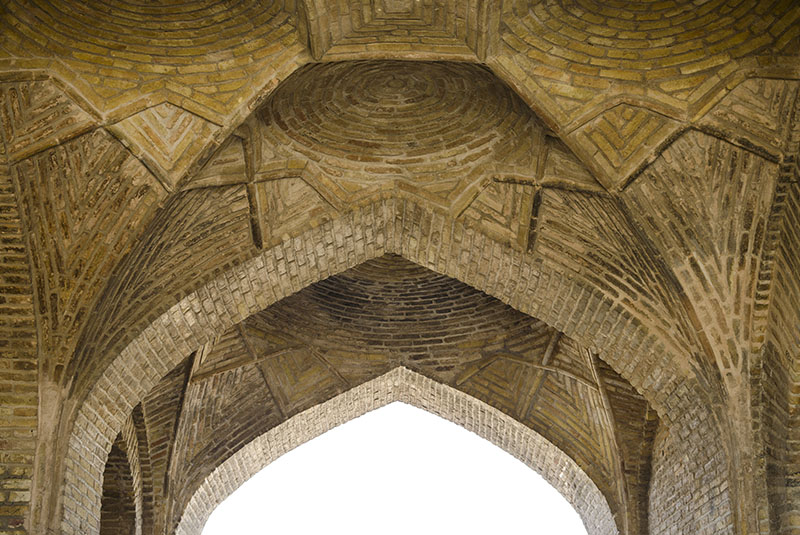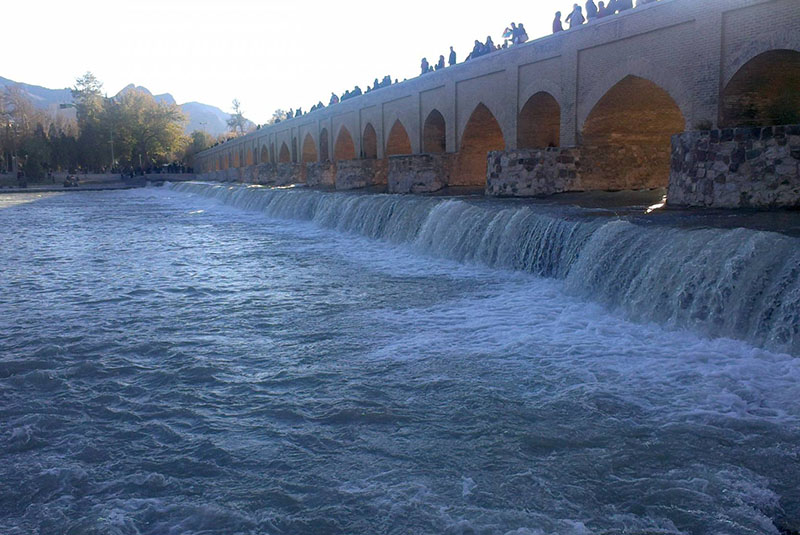Top 5 Bridges in Isfahan over Zayanderud River
Isfahan is one of the most visited cities in Iran, not only by locals but also by international tourists coming to the country. There are a number of monuments, historical houses and palaces, and local bazaars and shops to visit in the city.
Among the best sites to visit in Isfahan, there are five historical bridges. The five historical bridges in Isfahan over Zayanderud River comprise some of the finest architecture in the city. These five bridges include Shahrestan Bridge, Khaju Bridge, Choobi (Joui) Bridge, Si-o-
1. Shahrestan Bridge
The oldest bridge among all these five bridges is the Shahrestan Bridge which is located to the east from the central heart of the city. Its foundations were built during the Sasanian Empire (3rd to 7th century C.E.), and the architectural style is entirely Sasanian style. The top of the bridge was renovated twice, firstly during the 10th century by the Buyid Empire, and later during the 11th century by the Seljuk Empire.

There are two parabolas at the bridge. The vertical one ensures that the middle of the bridge is at the highest point, while the horizontal one produces a bend to the west, strengthening it against the flow of the river.
The bridge has approximately 108 meters in length and an average of 5.2
| Discover: Isfahan Mosques You Should Visit
2. Khaju Bridge
Further upstream is the Khaju Bridge, which was built in the mid-17th century, by Shah Abbas II during the Safavid Dynasty. It is one of the best examples of Persian architecture and displays the influence of Safavid culture in the country. After 350 years of being constructed, the bridge is still working, and nowadays it functions as a recreation center aiming at social interactions and cultural exchange.

The two-story bridge with 133 meters long, 12 meters
The bridge has different functions besides being a bridge. It also acts as a weir and a place for public meetings. There is a pavilion at the center of the structure which was used as the place for public meetings, and a place where Shah Abbas has once sat on and admired the view. Although, the only remnant of the king’s chair is a stone seat.
Mausoleum of Arthur Pope and his wife Phyllis Ackerman is situated nearby.
3. Choobi (Joui) Bridge
Moving toward the west, the other bridge is the Choobi (Joui) bridge, which was originally built in 1665 by Shah Abbas II to irrigate and connect his royal gardens on the north bank of the river. There are magnificent royal mansions around this bridge and therefore the bridge was mainly used to connect those and as a result only used by the court and high ranking officials, and not ordinary people.
The bridge was originally named Joui due to the stream made of Persian Stone that made the water pass from one side to the other side of the bridge. Later its name changed to “Choobi Bridge” (Choobi literally means wooden in Farsi) since it is a wooden bridge built over stones.
This Choobi Bridge length is 147 meters with 4 meters width. It also has 21 arches. The bridge and the two parlors within were for the exclusive use of the shah and his courtiers. Nowadays the parlors are being used as tea houses.
The water that passed through this bridge also led to the mansions and gardens. In the western part of the bridge the river water became like a lake, accordingly, it is also called “Lake Bridge”.
4. Si-o-se Pol Bridge
Further upstream again is the Si-o-Seh Pol or bridge of 33 arches. It is also known as Allahverdi Khan Bridge since the construction process was controlled by Shah’s chancellor, Allahverdi Khan Undiladze. Due to the size, central location, and prominent architecture, it is the most famous bridge among all over the Zayanderud River.
Built between 1599 and 1602 during the reign of Shah Abbas the Great, mainly to link Isfahan with the Armenian suburb of New Julfa.
It is by far the longest bridge in Isfahan at 295 meters length, with 13.75 meters width, and was constructed to serve as both a bridge and a dam. The bridge is a vaulted arch bridge consisting of two superimposed rows of 33 arches, from whence its popular name of Si-o-
5. Marnan Bridge
Another notable bridge is the Marnan Bridge. Which is the only among all these five that lies to the east of Chahar Bagh Street.
According to the historical evidence from the stone foundation of the bridge, it is believed that the bridge dates back to Sassanid era. Some scholars believe that the name Marnan is derived from the term "

It connected the old village of Marnan in the northern side of Zayandeh Rud River to the Armenian district of Jolfa in the south. This brick bridge has 175 meters length and 4.7 meters width. One of the most interesting point about the bridge is that there are two totally different themes at each side of the bridge. The water is so calm at the western side, but on the eastern side, the water roars in a small waterfall next to the bridge, making it a great place to get refreshed and energetic by the soothing voice of the river.
Today, the bridge is used for pedestrian crossing Zayanderud River, it is also a great spot to have a picnic and enjoy the view of the river.


Comment
Leave a Comment